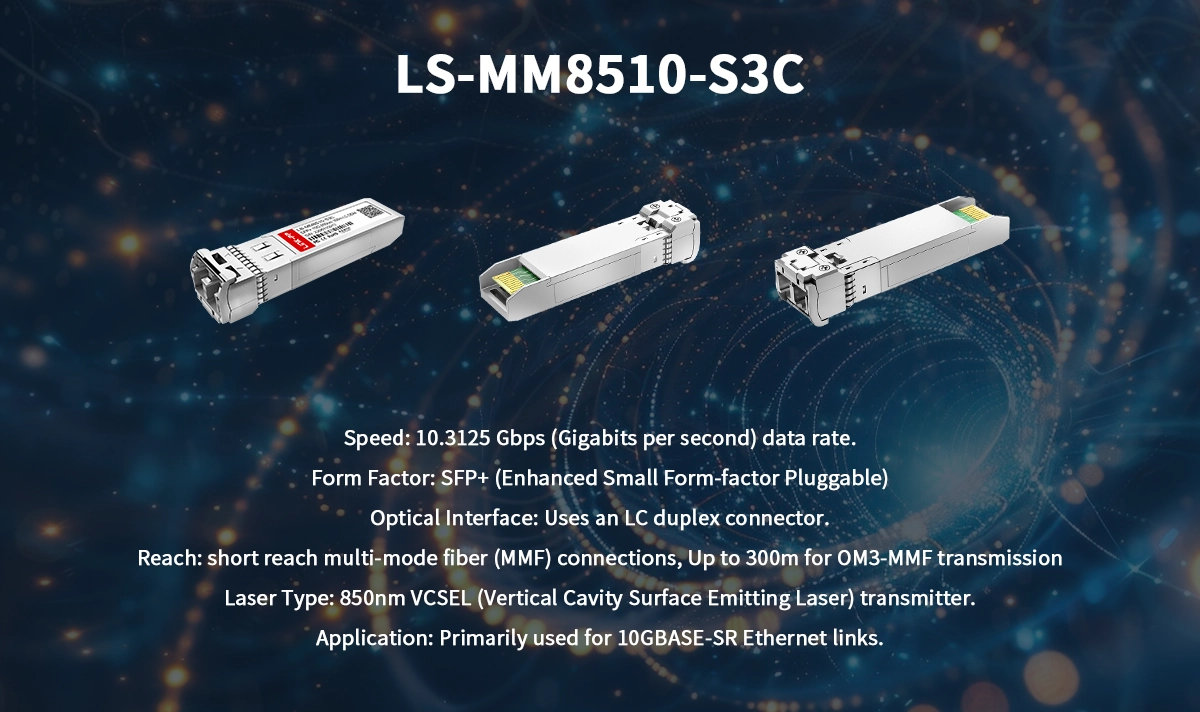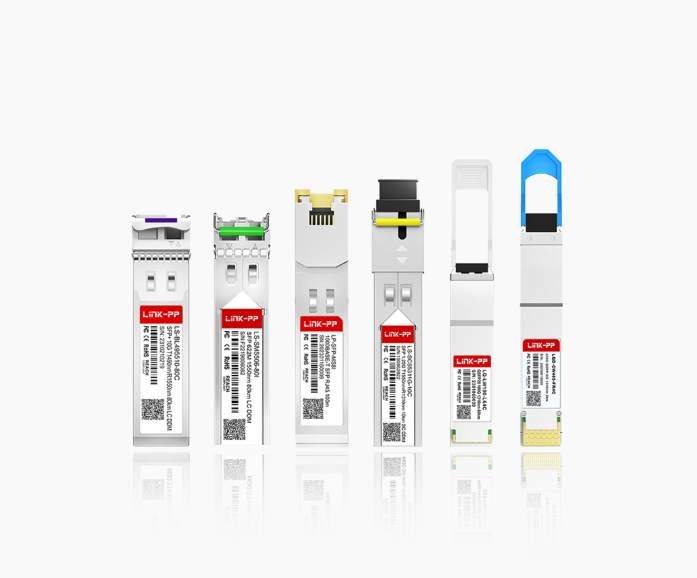
In the era of cloud computing, IoT, and real-time data processing, the demand for high-bandwidth, low-latency networks has never been higher. Enter the short-range 10G optical transceiver—a compact yet powerful device designed to transmit data at 10 gigabits per second (Gbps) over distances typically up to 300 meters. Unlike long-range variants, these transceivers excel in environments like data centers, campus networks, and storage area networks (SANs), where efficiency and speed are paramount. According to industry trends, the global optical transceiver market is projected to grow significantly, driven by the rise of 5G and hyperscale data centers. In this article, we'll break down everything you need to know about these essential components, including how they work, where they're used, and why brands like LINK-PP is leading the charge with innovative solutions. By the end, you'll have a clear roadmap to selecting the best transceiver for your needs, complete with actionable advice.
📄 What is a 10G Short-Range Optical Transceiver?
A 10G short-range optical transceiver is a small, hot-pluggable module that converts electrical signals into optical signals for transmission over multimode fiber (MMF) cables. Operating at a wavelength of 850nm, it supports standards like 10GBASE-SR (Short Range) and is commonly found in SFP+ (Small Form-factor Pluggable Plus) form factors. These devices are ideal for scenarios where high bandwidth is required over limited distances, such as within a server rack or between adjacent buildings. Key benefits include:
Low power consumption: Typically under 1W, reducing operational costs.
High density: Enables multiple connections in compact spaces, perfect for modern data centers.
Cost-effectiveness: Shorter distances mean less expensive fiber and lower latency.
For instance, in a data center upgrade, using a short-range 10G SFP+ transceiver can slash deployment costs by up to 30% compared to long-range alternatives. This makes them a go-to choice for enterprises looking to scale without breaking the bank.
📄 Applications of Short-Range 10G Transceivers
These transceivers are versatile and widely deployed across various industries. Here are some common use cases:
Data Centers: Facilitating server-to-switch connections and intra-rack links, ensuring high availability and minimal downtime.
Enterprise Networks: Connecting offices within a campus or building, supporting bandwidth-intensive applications like video conferencing and virtual desktops.
Cloud Computing: Enabling rapid data exchange in hybrid cloud environments, where low latency is critical for performance.
Telecommunications: Used in 5G fronthaul networks to handle increased data traffic efficiently.
By integrating optical transceiver modules for short-range applications, businesses can achieve seamless scalability. For example, a financial institution might use them to link trading floors, where milliseconds matter. The LINK-PP brand, known for its robust 10G SFP+ SR transceivers, is often recommended in these settings for its reliability and compliance with industry standards.
📄 Key Features and Specifications
When evaluating a short-range 10G optical transceiver, several technical aspects come into play. Below is a table summarizing the core specifications for typical models, including a popular option from LINK-PP:
Feature | Description | LINK-PP 10G-SR-SFP Example |
|---|---|---|
Data Rate | 10.3125Gbps | 10.3125Gbps |
Wavelength | 850nm | 850nm |
Max Transmission Distance | Up to 300m on OM3 MMF, 400m on OM4 MMF | 300m (OM3), 400m (OM4) |
Form Factor | SFP+ | SFP+ |
Power Consumption | < 1W | 0.8W |
Interface | Duplex LC connector | LC connector |
Operating Temperature | 0°C to 70°C | 0°C to 70°C |
Compatibility | Works with major switches (e.g., Cisco, Juniper) | Multi-vendor compatible |
This table highlights why LINK-PP optical transceivers stand out—they offer optimal performance with low power draw, making them a sustainable choice. Additionally, features like digital diagnostics monitoring (DDM) allow for real-time performance tracking, which is essential for proactive network management.

📄 The Anatomy of an Optical Transceiver Module
To truly appreciate how these devices work, let's dive into the inner workings of an optical transceiver module. At its core, a transceiver consists of a transmitter and receiver housed in a single unit. The transmitter converts electrical signals into light pulses using a laser or LED, while the receiver converts incoming light back into electrical signals. Key components include:
Laser Diode: Generates the optical signal—for short-range 10G transceivers, this is typically a VCSEL (Vertical-Cavity Surface-Emitting Laser) at 850nm.
Photodiode: Detects incoming light and converts it to electrical form.
Controller IC: Manages data integrity, power, and diagnostics.
Fiber Optic Interface: Usually an LC connector for easy plug-and-play installation.
This design ensures high reliability and minimal signal loss, which is why high-quality optical transceiver modules are critical for avoiding network bottlenecks. For instance, the LINK-PP SFP-10G-SR model incorporates advanced error correction and thermal management, making it ideal for dense deployments. When selecting a module, consider factors like compatibility—LINK-PP transceivers are tested to work seamlessly with equipment from brands like Cisco and HPE, reducing the risk of interoperability issues. By understanding this anatomy, you can better appreciate how these modules drive efficient short-range data transmission and why investing in reputable brands pays off.
📄 Benefits of Using High-Quality Transceivers like LINK-PP
Opting for reliable transceivers, such as those from LINK-PP, brings numerous advantages:
Enhanced Performance: Reduced bit error rates (BER) and higher signal integrity ensure smooth data flow.
Cost Savings: Competitive pricing and energy efficiency lower total cost of ownership (TCO).
Durability: Built to withstand harsh environments, with a mean time between failures (MTBF) exceeding 100,000 hours.
Ease of Integration: Hot-swappable design allows for quick upgrades without network downtime.
In practice, a company using LINK-PP 10G transceivers reported a 20% improvement in network uptime, thanks to their robust construction. Moreover, for those searching for best short-range 10G optical transceiver for enterprise networks, LINK-PP offers tailored solutions that align with specific operational needs.
📄 Conclusion
Short-range 10G optical transceivers are indispensable in modern networking, offering a blend of speed, efficiency, and affordability. From data centers to enterprise setups, they empower organizations to handle growing data demands effortlessly. By focusing on key aspects like specifications, applications, and module anatomy, you can make an informed choice that boosts your network's reliability. Brands like LINK-PP exemplify quality and innovation, with models like the 10G-SR-SFP delivering consistent results. As technology evolves, staying updated on optical transceiver trends will help you stay ahead of the curve.
📄 FAQ
What is the main use of a short-range 10G optical transceiver?
You use a short-range 10G optical transceiver to connect network devices inside buildings. It helps you move data quickly between servers, switches, and storage over short distances.
What fiber types work with short-range 10G optical transceivers?
You can use OM1, OM2, OM3, or OM4 multimode fiber. Most people choose OM3 or OM4 for longer short-range links. These fibers let you reach up to 300 or 400 meters.
What connector do you need for these transceivers?
You need an LC connector for most short-range 10G optical transceivers. This connector is small and easy to use. It helps you save space on your network equipment.
What devices support short-range 10G optical transceivers?
You find support in network switches, servers, and storage systems. Many brands and models have SFP+ slots for these modules. Always check your device manual for compatibility.




